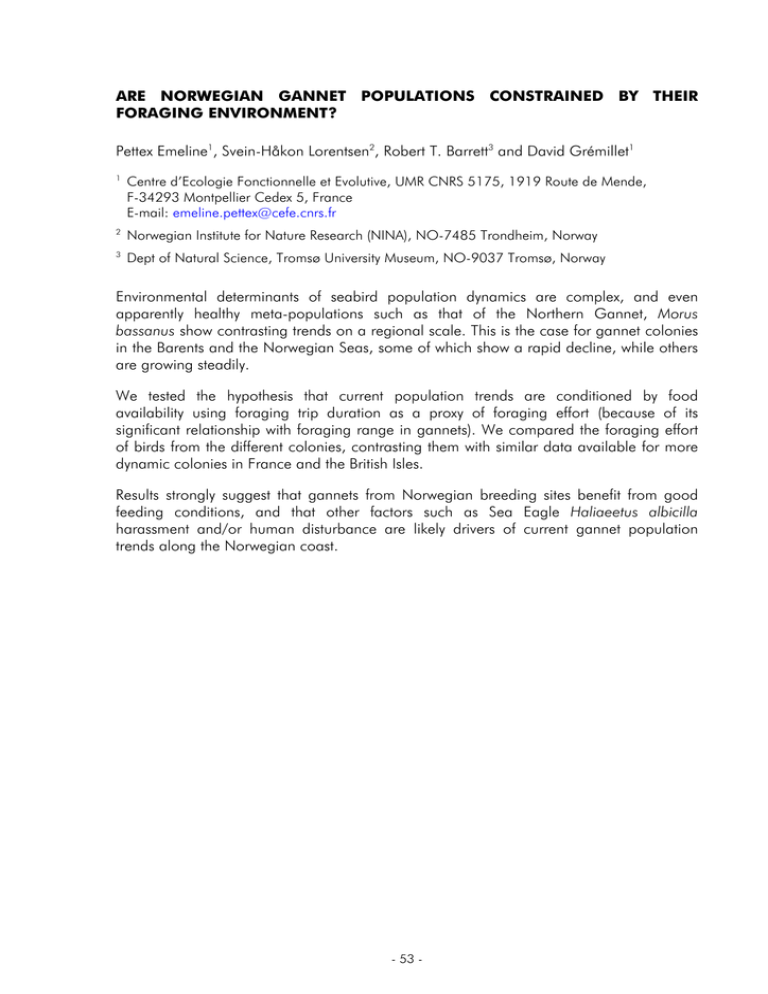ARE NORWEGIAN GANNET POPULATIONS CONSTRAINED BY THEIR FORAGING ENVIRONMENT? Pettex Emeline
advertisement

ARE NORWEGIAN GANNET POPULATIONS CONSTRAINED BY THEIR FORAGING ENVIRONMENT? Pettex Emeline1, Svein-Håkon Lorentsen2, Robert T. Barrett3 and David Grémillet1 1 Centre d’Ecologie Fonctionnelle et Evolutive, UMR CNRS 5175, 1919 Route de Mende, F-34293 Montpellier Cedex 5, France E-mail: emeline.pettex@cefe.cnrs.fr 2 Norwegian Institute for Nature Research (NINA), NO-7485 Trondheim, Norway 3 Dept of Natural Science, Tromsø University Museum, NO-9037 Tromsø, Norway Environmental determinants of seabird population dynamics are complex, and even apparently healthy meta-populations such as that of the Northern Gannet, Morus bassanus show contrasting trends on a regional scale. This is the case for gannet colonies in the Barents and the Norwegian Seas, some of which show a rapid decline, while others are growing steadily. We tested the hypothesis that current population trends are conditioned by food availability using foraging trip duration as a proxy of foraging effort (because of its significant relationship with foraging range in gannets). We compared the foraging effort of birds from the different colonies, contrasting them with similar data available for more dynamic colonies in France and the British Isles. Results strongly suggest that gannets from Norwegian breeding sites benefit from good feeding conditions, and that other factors such as Sea Eagle Haliaeetus albicilla harassment and/or human disturbance are likely drivers of current gannet population trends along the Norwegian coast. - 53 -



